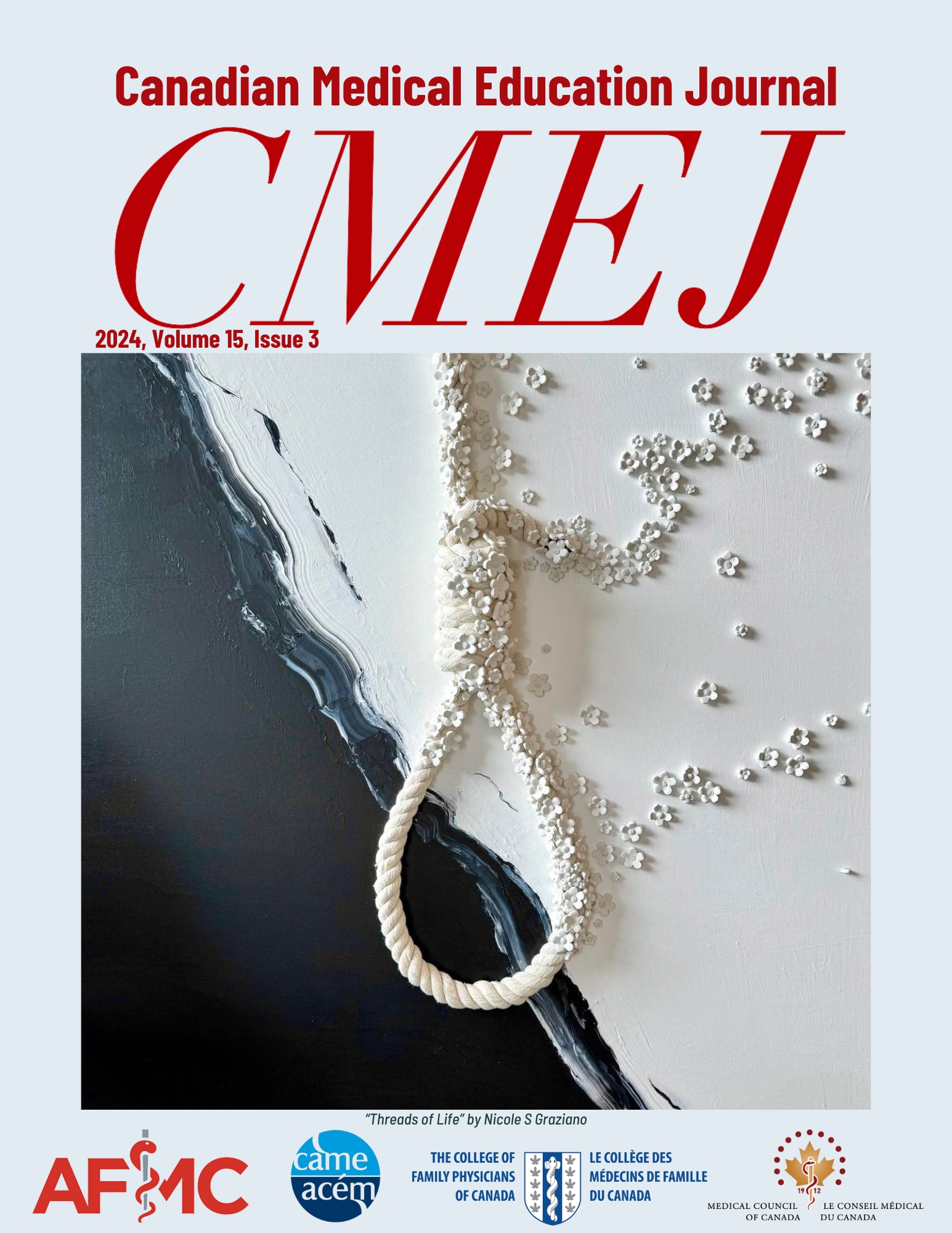Walk with a Future Doc program allows Canadian medical students to promote physical activity and health education in local communities
DOI:
https://doi.org/10.36834/cmej.77055Abstract
Implication Statement
Medical student-led walk and talk programs, such as Walk with a Future Doc (WWAFD), provide a means for the medical community and community at-large to interact in a non-clinical setting. This environment can increase attendance accountability, enhance patient-provider relationships, and allow medical professionals to be leading examples of healthy, active living. We demonstrate the positive interest for this program, rationale of participants for joining, and the feasibility of its setup. As one of the only WWAFD programs in Canada, we encourage other medical schools to implement this program to promote continuity of hands-on, community-engaged learning amongst their students.
Downloads
References
Colley RC, Butler G, Garriguet D, Prince SA, Roberts KC. Comparison of self-reported and accelerometer-measured physical activity in Canadian adults.
NB Health Council. Population Health Snapshot. 2016. Available from https://nbhc.ca/sites/default/files/publications-attachments/Population%20Health%20Snapshot%202016%20New%20Brunswick.pdf
Sabgir D, Dorn J. Walk with a Doc—a call to action for physician-led walking programs. Current Cardiology Reports 2020; vol. 22 Preprint. https://doi.org/10.1007/s11886-020-01297-y DOI: https://doi.org/10.1007/s11886-020-01297-y
Bethancourt HJ, Rosenberg DE, Beatty T, Arterburn DE. Barriers to and facilitators of physical activity program use among older adults. Clin Med Res 2014;12. https://doi.org/10.3121/cmr.2013.1171 DOI: https://doi.org/10.3121/cmr.2013.1171
Downloads
Published
How to Cite
Issue
Section
License
Copyright (c) 2023 Taylor M Wilson, Olga Theou, Myles W O'Brien

This work is licensed under a Creative Commons Attribution-NonCommercial-NoDerivatives 4.0 International License.
Submission of an original manuscript to the Canadian Medical Education Journal will be taken to mean that it represents original work not previously published, that it is not being considered elsewhere for publication. If accepted for publication, it will be published online and it will not be published elsewhere in the same form, for commercial purposes, in any language, without the consent of the publisher.
Authors who publish in the Canadian Medical Education Journal agree to release their articles under the Creative Commons Attribution-Noncommercial-No Derivative Works 4.0 Canada Licence. This licence allows anyone to copy and distribute the article for non-commercial purposes provided that appropriate attribution is given. For details of the rights an author grants users of their work, please see the licence summary and the full licence.











